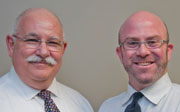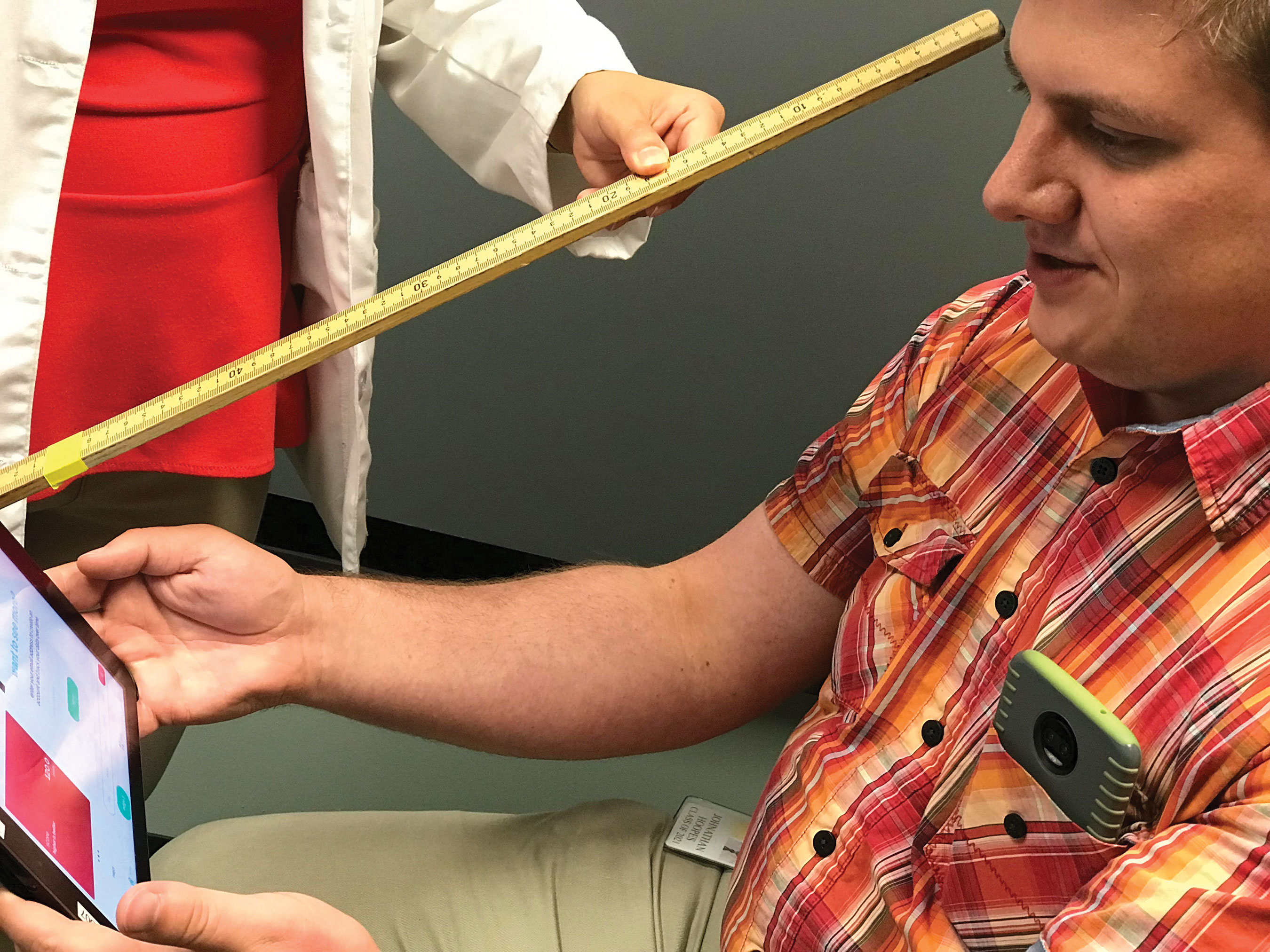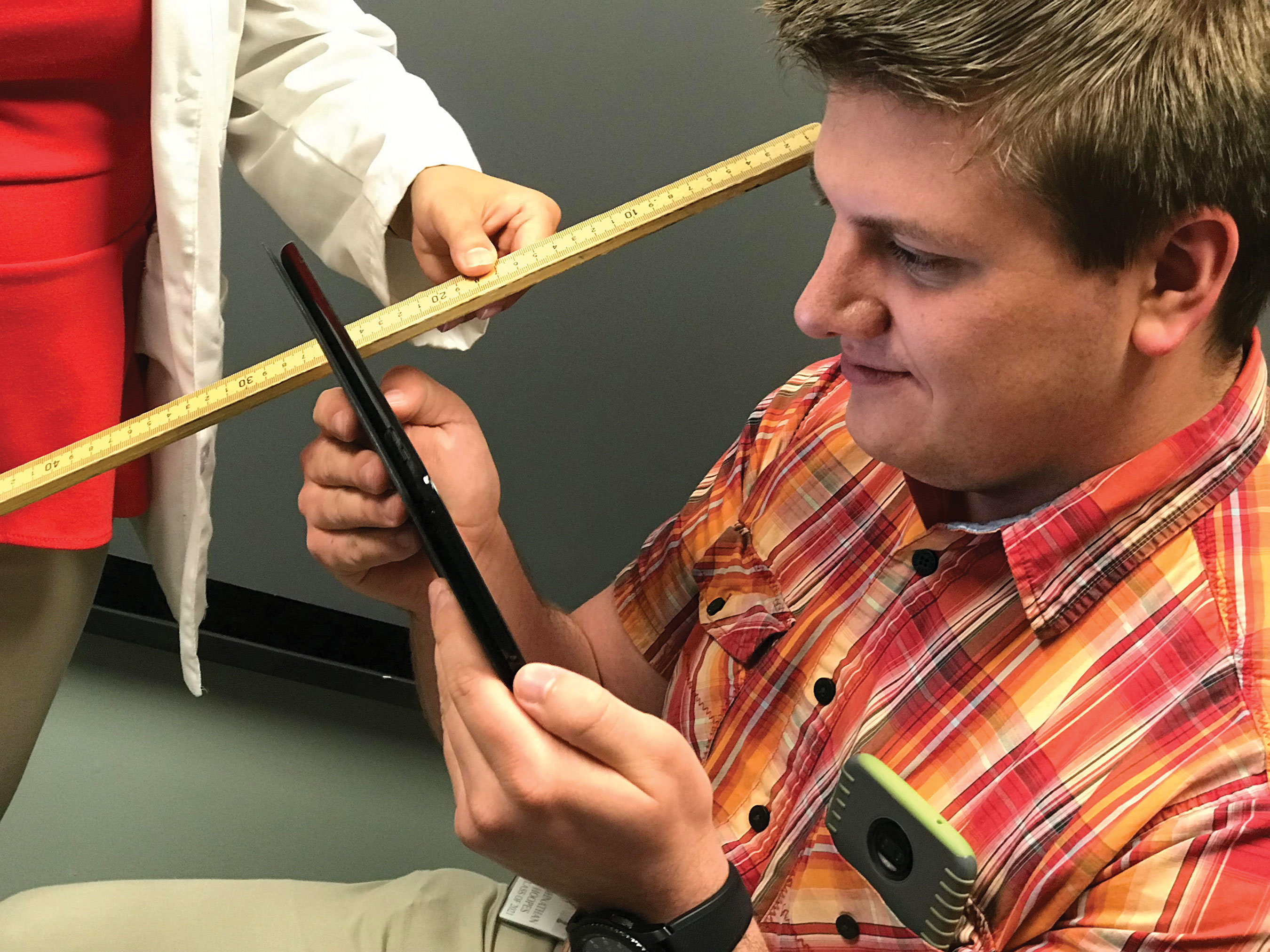 |
A question that often arises is how to determine bifocal power for patients. We all learned about the tables and charts that depict the loss of accommodation with age in optometry school. Presbyopia is in full force by the time most patients reach 40, and by the age of 70, everyone needs a +2.50 add at near, right? Not so fast. Here, we will discuss how our method of using ranges and showing them to our patients in varying real-life conditions helps us tailor lenses to their specific needs.
The Problem With Too Much Plus
It turns out that, based on age alone, many patients get too much plus at near. Over time, these patients show an increase in hyperopia at distance well beyond the +0.50 or +0.75 they measured for many years. The period between being prescribed full plus at near based on age and developing increasing hyperopia at distance varies from three to five years, and many patients go through it.
When looking at progressive myopia, many believe the problem begins at near and spreads to distance. Sustained close work causes a type of form deprivation in the periphery, which, when combined with peripheral defocus, seems to be the driving force behind axial length changes in the eye. The blur at distance is just a side effect of the close work. Without the close work causing peripheral defocus and form deprivation, the eye wouldn’t change the way it does or experience myopia that progresses faster than normal.
Too much plus at near also sets up a situation where patients are not rewarded for supplying their own accommodation. If they have too much plus at near and do not like looking or having to look closely at things to see them, they learn to inhibit accommodation or, put more blatantly, start to get lazy. The “zero-position,” or the dark focus point of the whole system, shifts outward, which, over time, can manifest as an increase in the hyperopia at distance. When left unchecked for long enough, this can cause patients to become dependent on some plus for clarity and relaxation at distance.
 |
 |
| This patient is completing range testing with an iPad as his target. |
How to Avoid Too Much Plus
The development of many different near retinoscopy techniques—including book, bell, MEM, stress-point and just-look retinoscopy—made it possible to steer clear of giving too much plus at near. The pioneers of our profession looked at different aspects of the retinoscopic reflex in relation to the demands patients experience and the targets they look at. They discovered that there is an optimum amount of plus and that too little or too much can cause short- and long-term problems for patients.
Another test we all learned in optometry school is the fused cross-cylinder (FCC) test. It’s problematic in that about 25% of patients don’t see a difference between the vertical and horizontal lines when the test is done in the traditional way. Some phoropters, however, can flip the Jackson cross cylinders used to administer the test to an alternate orientation, making it possible to obtain a clear endpoint for nearly all patients. But, modifying how we arrive at these endpoints still does not give us a foolproof way to come up with add powers that aren’t too high. FCC test results and negative relative accommodation and positive relative accommodation findings only give us a framework within which we can come up with add powers for our patients.
Stress-point retinoscopy was then developed to come up with the optimum plus lens for near. The technique is very difficult for many to master and requires the use of a spot retinoscope. Though a new spot retinoscope is now on the market, the technique still remains difficult to grasp. When used correctly, it yields an optimum amount of plus that the patient can use successfully immediately without risk of rejection. Often, the plus power a patient receives for near from the stress point retinoscopy method is less than the FCC test.
If you don’t know how to do stress-point retinoscopy or you don’t have a spot retinoscope, trial framing the plus to see if it is clear at a patient’s habitual or desired reading distance and to measure ranges for the lenses over which the patient can see clearly is another option. Give the patient a target, such as a computer or phone screen, that resembles something they normally look at. Have them bring it closer to them until it begins to blur, and then have them push it further from them until it begins to blur. This establishes the range over which the lenses will work and sets the stage for a discussion about the reduced depth of field of focus and the loss of accommodation amplitude that occur with age. Our patients want one lens to do it all and everything to be perfectly clear all time, regardless of where the demand is in their visual field. It’s up to us to help them achieve that, with whichever method we decide to use.
We have found that many people prefer sacrificing a bit of the very close range for big extensions in the back end of the range, which is less plus for near, and self-select this option when given the chance to see and understand their choices.
It may be beneficial to determine the add power you would normally give with your current method of prescribing and then obtain the range measurements with the technique we suggested to give your patients two options and see what they prefer. You may find that less is best and stabilizes your patient’s distance refractions over time.

